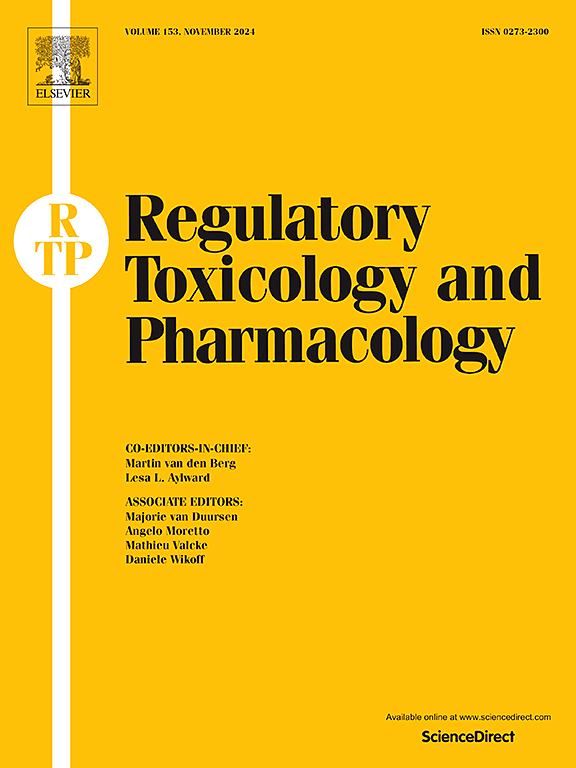美国1,3-丁二烯暴露的人类健康风险评估,由独立科学咨询小组提供意见
IF 3.5
4区 医学
Q1 MEDICINE, LEGAL
引用次数: 0
摘要
利用现有的最佳科学、数据和方法,对1,3-丁二烯(BD)的潜在癌症和非癌症效应进行了人类健康风险评估。聘请了一个独立的专家小组,就定量评估中作出的关键决定提供投入和指导。BD生物标志物数据在量化物种差异、人类变异和吸烟暴露方面发挥了重要作用。评估包括考虑19种潜在的工人暴露情景,每一种情景都包括使用呼吸器影响的特征,以及7种跨途径暴露于双溴联苯的情景。蒙特卡罗方法用于表征双相障碍暴露的不确定性和变异风险和危害。该评估结果支持三个一般性结论:(1)与其他来源相比,环境空气通常不是美国人群双相障碍暴露的重要来源;(2)在美国,双相障碍暴露预计不会造成不合理的癌症或非癌症影响风险;(3)现有的OSHA PEL值为1ppm被认为可以保护双酚a暴露的潜在癌症风险和非癌症危害。本文章由计算机程序翻译,如有差异,请以英文原文为准。
Human health risk assessment for exposures to 1,3-butadiene in the United States with input from an independent science advisory panel
A human health risk assessment was conducted for potential cancer and noncancer effects of 1,3-butadiene (BD) using best available science, data, and methodologies. An independent panel of experts was engaged to provide input and guidance on key decisions made in the quantitative assessment. BD biomarker data played an important role in quantifying species differences, human variation, and quantifying smoking exposures. The assessment included consideration of nineteen scenarios for potential worker exposures, each of which include characterization of the impact of respirator use, and seven scenarios for aggregate exposures to BD across pathways. Monte Carlo methods were used to characterize uncertainty and variation risks and hazards from exposures to BD. The results of this assessment support three general conclusions: (1) ambient air is generally not an important source of BD exposure to the U.S. population when compared to other sources; (2) exposures to BD in the US are not expected to pose an unreasonable risk of cancer or noncancer effects; and (3) the existing OSHA PEL of 1 ppm is considered to be protective of the potential cancer risks and noncancer hazards from BD exposures.
求助全文
通过发布文献求助,成功后即可免费获取论文全文。
去求助
来源期刊
CiteScore
6.70
自引率
8.80%
发文量
147
审稿时长
58 days
期刊介绍:
Regulatory Toxicology and Pharmacology publishes peer reviewed articles that involve the generation, evaluation, and interpretation of experimental animal and human data that are of direct importance and relevance for regulatory authorities with respect to toxicological and pharmacological regulations in society. All peer-reviewed articles that are published should be devoted to improve the protection of human health and environment. Reviews and discussions are welcomed that address legal and/or regulatory decisions with respect to risk assessment and management of toxicological and pharmacological compounds on a scientific basis. It addresses an international readership of scientists, risk assessors and managers, and other professionals active in the field of human and environmental health.
Types of peer-reviewed articles published:
-Original research articles of relevance for regulatory aspects covering aspects including, but not limited to:
1.Factors influencing human sensitivity
2.Exposure science related to risk assessment
3.Alternative toxicological test methods
4.Frameworks for evaluation and integration of data in regulatory evaluations
5.Harmonization across regulatory agencies
6.Read-across methods and evaluations
-Contemporary Reviews on policy related Research issues
-Letters to the Editor
-Guest Editorials (by Invitation)

 求助内容:
求助内容: 应助结果提醒方式:
应助结果提醒方式:


